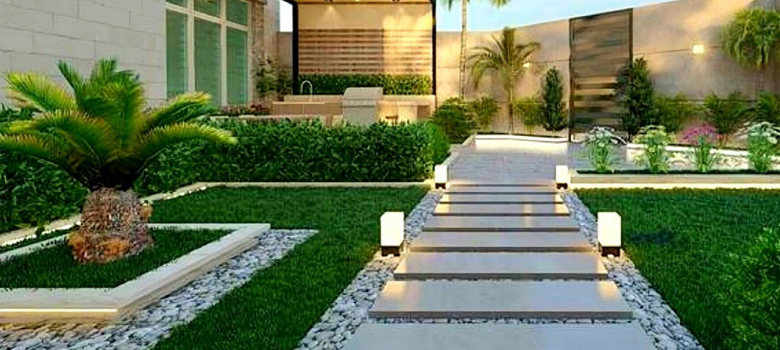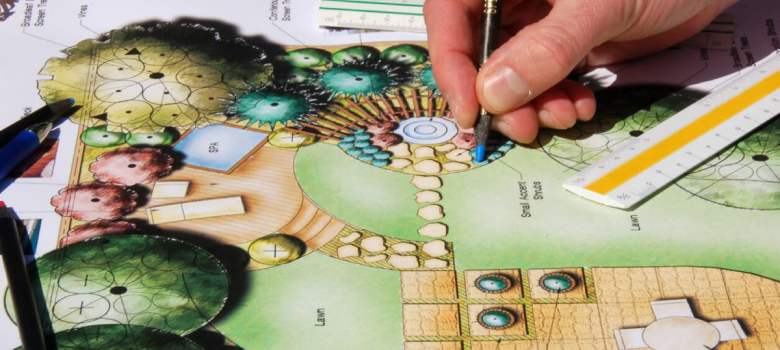Major Brand Suppliers






Services
Transform your outdoor space with landscape design
At Gardengigs, our team of skilled designers and horticulturists are dedicated to crafting stunning landscapes that seamlessly blend beauty and functionality. Whether you’re dreaming of a tranquil garden retreat, a modern outdoor entertainment area, or a sustainable native oasis, we tailor designs to your vision, lifestyle, and the local environment.
From initial concept sketches through to the strategically placed final plant placements, we ensure attention to detail and a collaborative approach.
If you’re ready to elevate your property’s aesthetics, value, and livability, we’re ready to support you with innovative landscape design services.
Your dream outdoor space is just a consultation away. Learn more by reaching out on 0417 164 406 or requesting an obligation-free consultation online today.

How do I know if I need professional landscape design?
Unutilised Space: If your outdoor area is underutilised or lacks purpose, a well-planned landscape design can transform it into functional and appealing spaces for relaxation, recreation, or entertainment.
Lack of Cohesion: If your yard feels disjointed, with various elements not flowing harmoniously, a professional design can create a unified and balanced look that ties everything together.
Property Value Goals: If you’re looking to increase your property’s value and curb appeal, a thoughtfully designed landscape can greatly enhance the overall aesthetics and market value.
Environmental Considerations: If you want to incorporate sustainable practices and native plants that thrive in Canberra’s climate, a landscape designer can guide you towards eco-friendly choices.
Lack of Time and Expertise: If you lack the time, knowledge, or creativity to design and maintain your landscape, a professional can handle everything from planning to plant selection, ensuring a thriving and beautiful outdoor space.
Specific Needs: If you have specific needs like privacy screening, erosion control, or creating child-friendly areas, a designer can tailor the landscape to meet these requirements effectively.
New Property Renovation: Whether you’re renovating an existing landscape or starting from scratch on a new property, a landscape design will ensure a well-thought-out and visually pleasing result.
Personalisation: If you want a unique and personalised outdoor environment that reflects your taste and lifestyle, a professional can bring your ideas to life while offering expert guidance.
How much does landscape design cost?
Basic consultations or concept plans might be on the lower end of the range, while comprehensive designs with detailed plans, plant recommendations, and 3D renderings tend to be on the higher end.
For more specific quotes, get in touch on 0417 164 406 today.

How long does a landscaping project typically take?
- Initial Consultation: This is where you discuss your ideas, goals, and requirements with the designer. It can take a few hours to a week to schedule and conduct this meeting.
- Design Development: After the consultation, the designer will work on developing the initial concept. This might take a few weeks, during which they create sketches, and layouts, and gather plant and material options.
- Revisions and Finalisation: Depending on your feedback and desired changes, there could be a back-and-forth process of revisions. This might add another week or two to the timeline.
- Detailed Planning: If the project involves detailed plans, 3D renderings, or construction drawings, this phase could take a few weeks.
- Plant Sourcing: Once the design is finalised, the designer might need time to source the specific plants and materials for your area. This could take a couple of weeks.
- Implementation: The actual implementation of the design can vary significantly based on the project’s scale and complexity. It might take anywhere from a few days to several weeks or more.
How can I identify a professional landscape design team?
- Credentials and Experience: Look for designers who have relevant qualifications in landscape architecture, horticulture, or related fields. Experience matters, so inquire about their years in the industry and ask to see their portfolio of past projects.
- Portfolio and References: Review their portfolio to gauge the quality and diversity of their work. Ask for client references or testimonials to get an idea of their past clients’ satisfaction levels.
- Licensing and Insurance: Check if the designer holds the necessary licences and permits to operate in your area. They should also have liability insurance to cover any potential damages during the project.
- Consultation and Communication: A professional designer will conduct a thorough initial consultation to understand your needs, preferences, and budget. They should be excellent listeners and communicators, ensuring that your ideas are considered throughout the process.
- Design Process: Inquire about their design process. A reputable designer will have a structured approach that includes initial concepts, revisions, detailed plans, and possibly 3D renderings.
- Client Involvement: A good designer will involve you in the decision-making process and encourage your input. They should be able to balance your preferences with their expertise.
- Knowledge of Local Conditions: Canberra has unique climate and environmental considerations. A professional designer should have a good understanding of the local climate, soil conditions, and suitable plant choices.
- Transparent Pricing: A professional will provide clear and transparent pricing details, outlining the costs associated with the design process, any additional services, and potential extra charges.
- Timelines: They should be able to provide you with a reasonable estimate of how long the design process will take based on the scope of your project.
- Communication Skills: Effective communication is key. A professional designer will respond promptly to your inquiries, provide regular updates, and keep you informed throughout the project.
- Reviews and Reputation: Check online reviews, testimonials, and ratings on platforms like Google, Yelp, or social media to gauge the designer’s reputation and the experiences of past clients.
- Site Visit: A professional designer will likely conduct a site visit to assess the area firsthand and gather important information about the site’s conditions.
Taking the time to research and interview multiple designers will help you make an informed decision and choose a landscape design professional who aligns with your vision and needs.
Frequently Asked Questions About Landscape Design in Canberra
What is the difference between landscape planning and landscape design?
Landscape Planning
Landscape planning is a broader and more strategic phase that involves assessing the overall layout and land use of a larger area. It often takes into account factors like environmental sustainability, land management, and urban development. Landscape planning is concerned with making informed decisions about land use, zoning, infrastructure, and preservation of natural resources. It may involve considerations such as future growth, transportation, and community needs. This phase is more about setting the framework for how a space will be used and developed.
Landscape Design
Landscape design is a more detailed and creative phase that comes after landscape planning. It focuses on the aesthetics, functionality, and spatial arrangement of outdoor areas. Landscape designers create detailed plans that incorporate elements such as pathways, patios, water features, planting schemes, lighting, and furniture. Designers consider the user’s experience, aesthetics, and practicality to create visually pleasing and functional outdoor spaces. They often use tools like sketches, computer-aided design (CAD) software, and 3D renderings to illustrate their ideas.
Why choose landscape design?
Aesthetics: Landscape design creates visually appealing outdoor environments that reflect your style and preferences. Thoughtful design elements like plant selection, hardscaping, and focal points enhance the overall beauty of your property.
Functionality: Designers consider how you intend to use the space – whether for relaxation, entertainment, gardening, or other activities. Proper layout and zoning ensure that each area serves its intended purpose effectively.
Increased Property Value: A well-designed landscape can significantly boost your property’s value and curb appeal. Potential buyers are often attracted to homes with attractive and functional outdoor spaces.
Environmental Benefits: Designers can incorporate sustainable practices such as using native plants, efficient irrigation, and eco-friendly materials. These choices reduce water consumption, support local ecosystems, and promote biodiversity.
Maximised Space: Professional designers can optimise your outdoor area, making the most of available space and addressing potential challenges like uneven terrain or limited sunlight.
Efficient Use of Resources: Designers consider factors like soil type, climate, and maintenance requirements when choosing plants and materials. This leads to a more efficient use of resources and reduced upkeep.
Long-Term Planning: Landscape designers develop comprehensive plans that consider the growth of plants over time, ensuring your landscape remains attractive and well-maintained as it matures.
Expertise and Creativity: Designers bring their expertise, knowledge of design principles, and creative flair to your project. They can envision possibilities you might not have considered.
